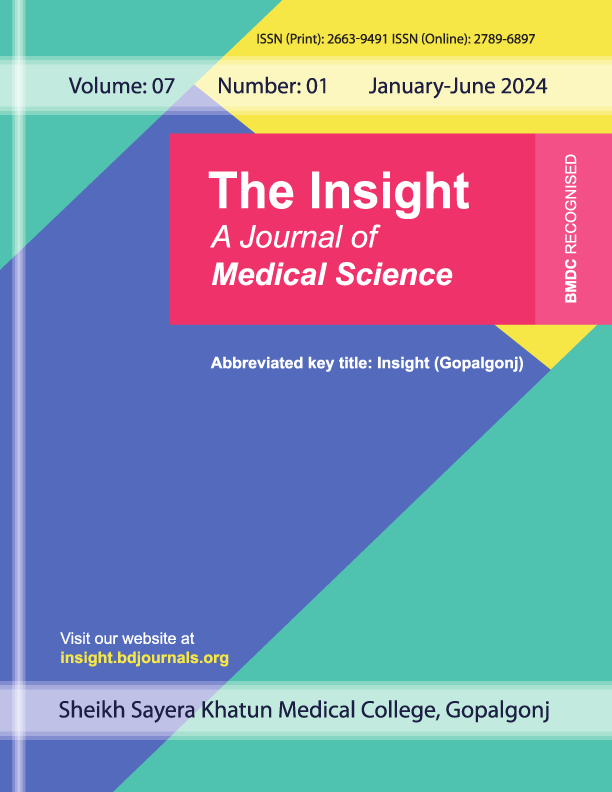Assessing the Prevalence of Extrapulmonary TB in Pulmonary TB with Demographic and Clinical Profile Across Different Populations
Published 15-11-2024
Keywords
- Pulmonary Tb,
- Extrapulmonary TB,
- ZN Staining,
- Culture, Gene Xpert,
- Lymphocyte
Copyright (c) 2024 The Insight

This work is licensed under a Creative Commons Attribution 4.0 International License.
How to Cite
Abstract
Introduction: Tuberculosis (TB) remains a significant global health threat, with pulmonary TB being the most common form. Objective: The study aims to determine the prevalence of EPTB in individuals diagnosed with pulmonary TB (PTB) across various populations. Methods & Materials: A retrospective analysis was conducted at a hospital's Department of Medicine (from January 2022 to December 2024). 200 participants were recruited, with confirmed pulmonary TB diagnoses based on positive sputum tests, cultures, or Gene Xpert. Individuals suspected of but not confirmed to have pulmonary TB, those lacking complete EPTB data, or those with missing demographic information were excluded. Results: This study compared characteristics of two groups diagnosed with TB. Significant differences were found in age distribution (p=0.0321), history of TB contact (p=0.0017), and white blood cell count (p=0.0059), suggesting distinct profiles between the groups. No significant variations were observed in gender (p=1.000), socioeconomic status (p=0.7367), type of TB (p=0.5103), or hemoglobin level (p=0.3853). Gene Xpert and chest X-rays were the primary diagnostic tools for both groups, though their distribution differed significantly (p=0.016). Chest X-ray findings (cavitation, consolidation, fibrosis) did not show significant variations. However, lymphocyte count differed significantly (p=0.0379) between the groups. Treatment outcomes also differed significantly (p=0.0332), with Group B having a higher rate of treatment failure and loss to follow-up. Further research is needed to explore these factors. Conclusion: This study identified significant differences in age, prior TB exposure, and white blood cell count between patient groups. Gender, socioeconomic background, TB type, and hemoglobin levels did not differ statistically.



